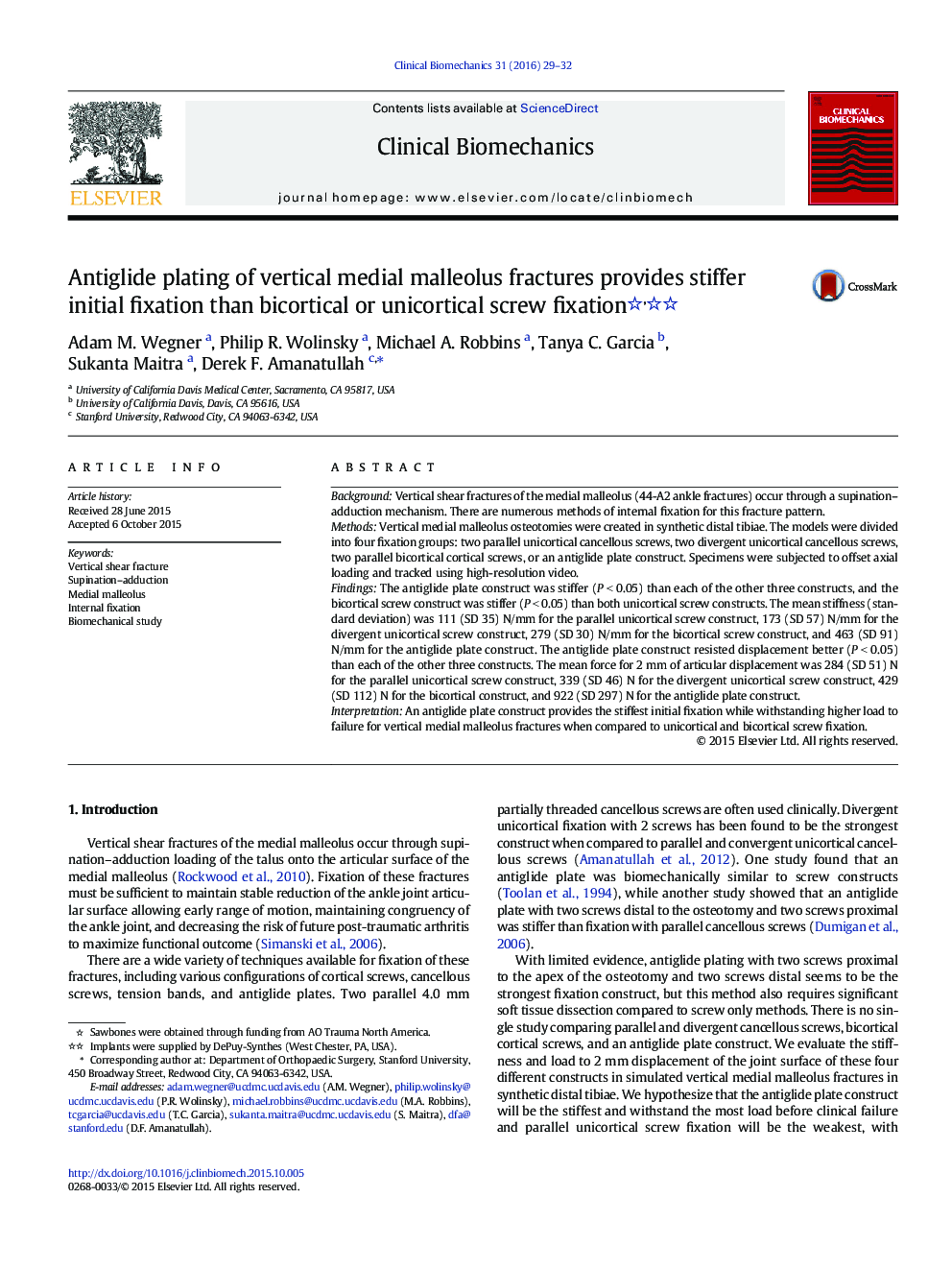| Article ID | Journal | Published Year | Pages | File Type |
|---|---|---|---|---|
| 4050165 | Clinical Biomechanics | 2016 | 4 Pages |
•Four constructs were tested for fixation of vertical medial malleolus fractures.•Divergent unicortical screws were similar to parallel screws during offset loading.•Bicortical screws were superior to unicortical screws.•Antiglide plating provided the most stiffness.
BackgroundVertical shear fractures of the medial malleolus (44-A2 ankle fractures) occur through a supination–adduction mechanism. There are numerous methods of internal fixation for this fracture pattern.MethodsVertical medial malleolus osteotomies were created in synthetic distal tibiae. The models were divided into four fixation groups: two parallel unicortical cancellous screws, two divergent unicortical cancellous screws, two parallel bicortical cortical screws, or an antiglide plate construct. Specimens were subjected to offset axial loading and tracked using high-resolution video.FindingsThe antiglide plate construct was stiffer (P < 0.05) than each of the other three constructs, and the bicortical screw construct was stiffer (P < 0.05) than both unicortical screw constructs. The mean stiffness (standard deviation) was 111 (SD 35) N/mm for the parallel unicortical screw construct, 173 (SD 57) N/mm for the divergent unicortical screw construct, 279 (SD 30) N/mm for the bicortical screw construct, and 463 (SD 91) N/mm for the antiglide plate construct. The antiglide plate construct resisted displacement better (P < 0.05) than each of the other three constructs. The mean force for 2 mm of articular displacement was 284 (SD 51) N for the parallel unicortical screw construct, 339 (SD 46) N for the divergent unicortical screw construct, 429 (SD 112) N for the bicortical construct, and 922 (SD 297) N for the antiglide plate construct.InterpretationAn antiglide plate construct provides the stiffest initial fixation while withstanding higher load to failure for vertical medial malleolus fractures when compared to unicortical and bicortical screw fixation.
